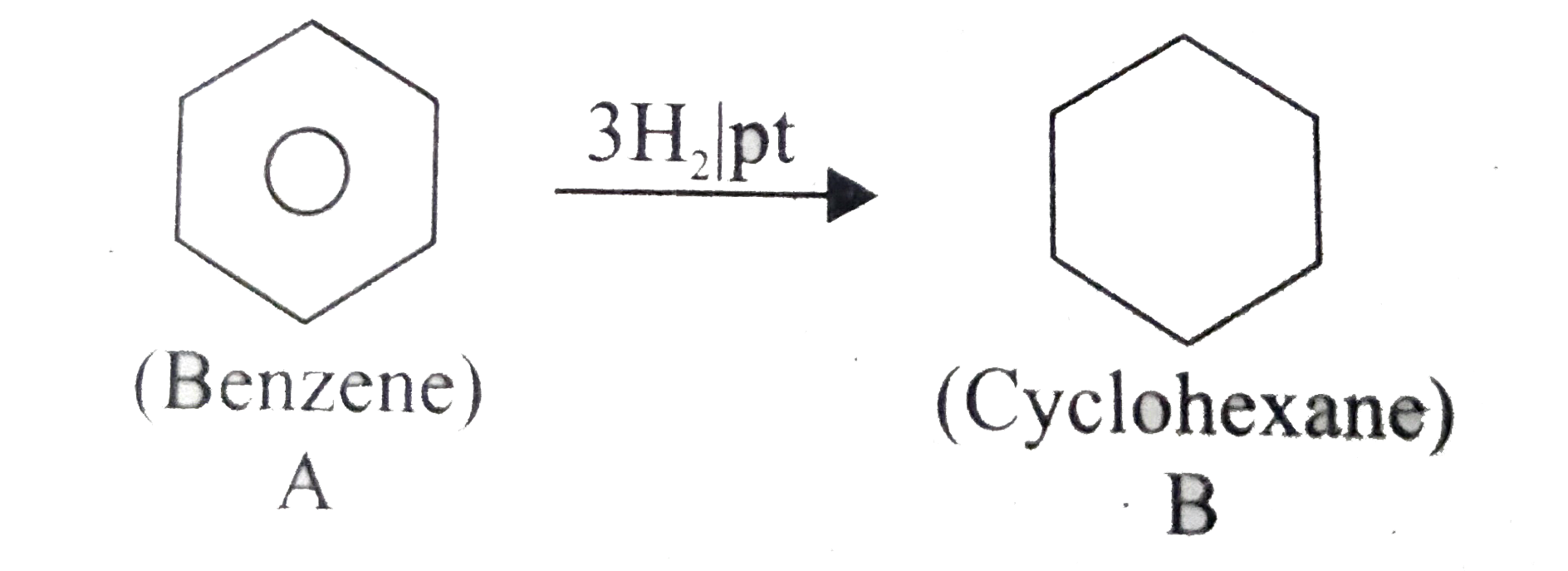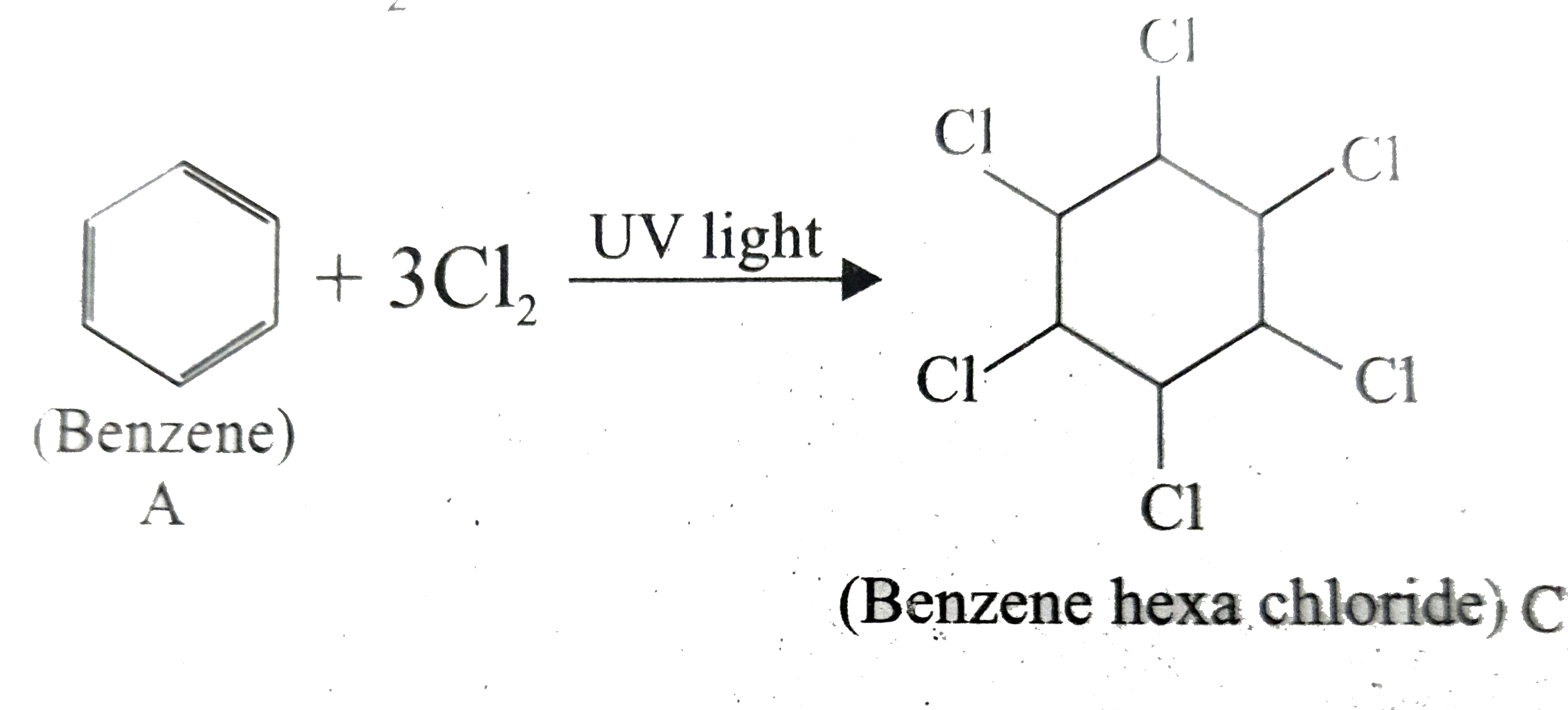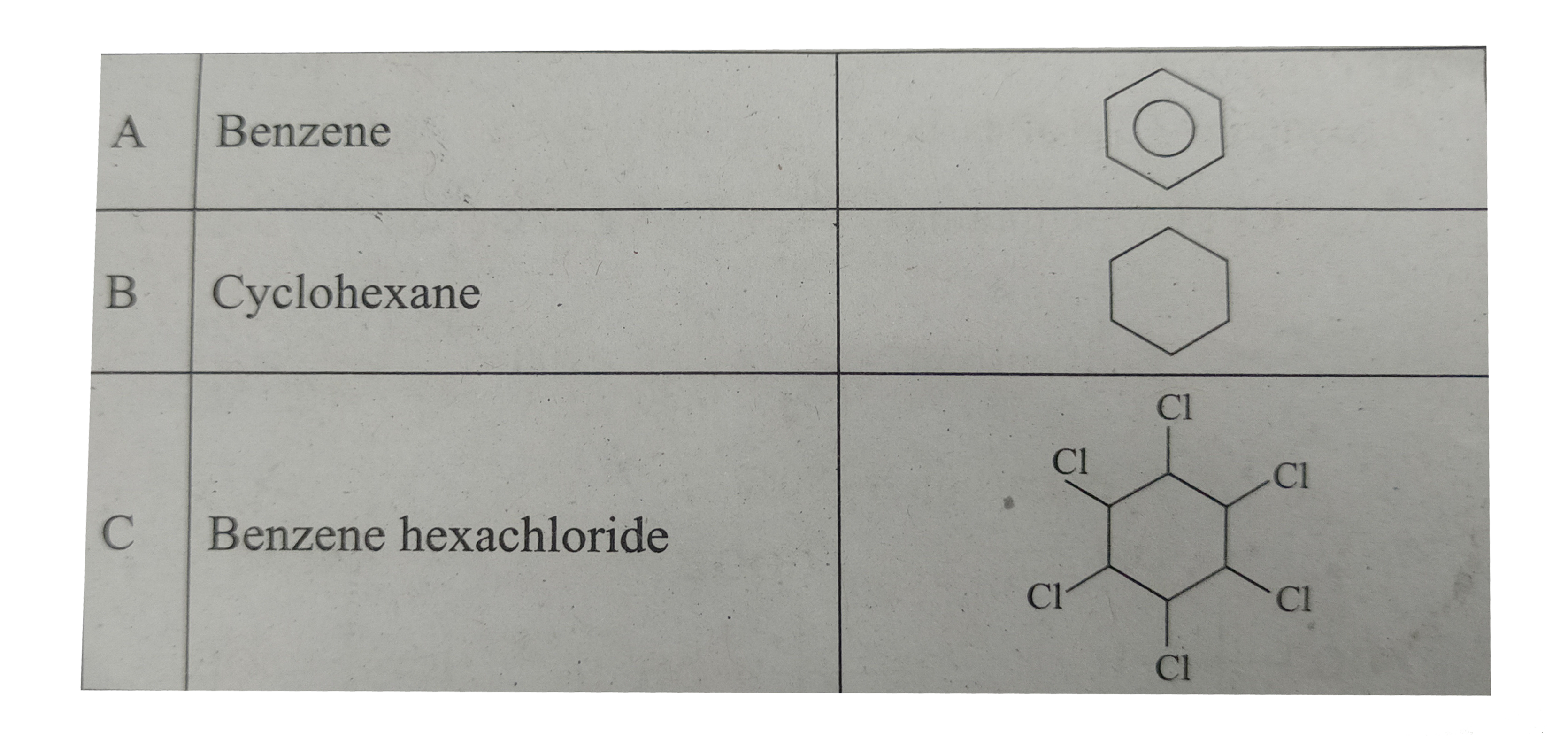An organic compound (A) of a molecular formula C6H6 which simple aromatic hydrocarbon. A undergoes hydrogenation to give a cyclic compound (B). A reacts with chlorine in the presence of UV-light to give C which is used insecticide Indentify A,B and C. Explain the reactions with equation.
1. Simple aromatic hydrocarbon, C6H6 is benzene.
2. Benzene (A) reacts with H2 in the presence of Pt to give cyclohexane (B)

3. Benzene (A) reacts with Cl2 in presence of UV-light to give benzene hexachloride (C).


Topper's Solved these Questions
- SAMPLE PAPER - 10 (SOLVED)BOOK - FULL MARKSCHAPTER - SAMPLE PAPER - 10 (SOLVED)EXERCISE - PART - III
9 Videos
- QUANTUM MECHANICAL MODEL OF ATOMBOOK - FULL MARKSCHAPTER - QUANTUM MECHANICAL MODEL OF ATOMEXERCISE - Additional Questions Solved (5-Mark Questions)
6 Videos
- SAMPLE PAPER -07BOOK - FULL MARKSCHAPTER - SAMPLE PAPER -07EXERCISE - PART-IV
10 Videos
Similar Questions
An organic compound P has molecular formula C2H4. On reduction, it gives another compound Q with molecular formula C2H6. Q reacts with chlorine in the presence of sunlight to give R having molecular formula C2H5Cl.
Identify P, Q and R.
View SolutionAn organic compound A of molecular formula C2H4 on reduction gives another compound B of molecular formula C2H6. B on reaction with chlorine in the presence of sunlight gives C of molecular formula C2H5Cl.
(a) name the compound A,B and C
(b) Write chemical equation for the conversion of A to B and name the type of reaction.
View Solution
Knowledge Check
An organic compound A of molecular formula C2H4, on reduction gives another compound B of molecular formula C2H6 .B on reaction with chlorine in the presence of sunlight gives C of molecular formula C2H5CI .
The compounds A, B and Care:AA: ethene B: ethane C: chloroethaneBA: ethane B: ethyne C: chloromethaneCA: ethyne B: ethane C: chloroethaneDA: ethene B: ethyne C: chloroethaneAn organic compound A of molecular formula C2H4, on reduction gives another compound B of molecular formula C2H6 .B on reaction with chlorine in the presence of sunlight gives C of molecular formula C2H5CI .
Which of these statements is correct regarding addition reaction?AAddition of hydrogen does not require catalyst.BMultiple bonds (double and triple bonds) must be present between carbon atoms in the chain of hydrocarbon.CMultiple bonds are not required for the reaction to take place.DNone of the above.An organic compound A of molecular formula C2H4, on reduction gives another compound B of molecular formula C2H6 .B on reaction with chlorine in the presence of sunlight gives C of molecular formula C2H5CI .
Unsaturated hydrocarbons undergo________ reactionASubstitutionBHalogenationCAdditionDAll of the above
An aliphatic compound (A) with a molecular formula C3H6O reacts with phenylhydrazine to give compound (B). Reaction of (A) with I2 in alkaline solution on warming gives a yellow precipitate (C). Identify the compounds A, B and C.
View SolutionAn organic compound A of molecular formula C2H4, on reduction gives another compound B of molecular formula C2H6. B on reaction with chlorine in the presence of sunlight gives C of molecular formula C2H5CI .
The general formula for alkene is:
View SolutionAn organic compound A of molecular formula C2H4, on reduction gives another compound B of molecular formula C2H6 .B on reaction with chlorine in the presence of sunlight gives C of molecular formula C2H5CI .
Choose the correct condition for conversion of ethene to ethane:
View SolutionAn organic compound 'A' has the molecular formula C3H6O, it undergoes iodoform test. Whet satruated with HCl it gives 'B' of molecular foumula C9H14O. A and B, respectively are
View SolutionAn aromatic compound of molecular formula C6H4Br2 was nitrated which gives three isomers of formula C6H3Br2NO2 were obtained. The original compound is :
View Solution
